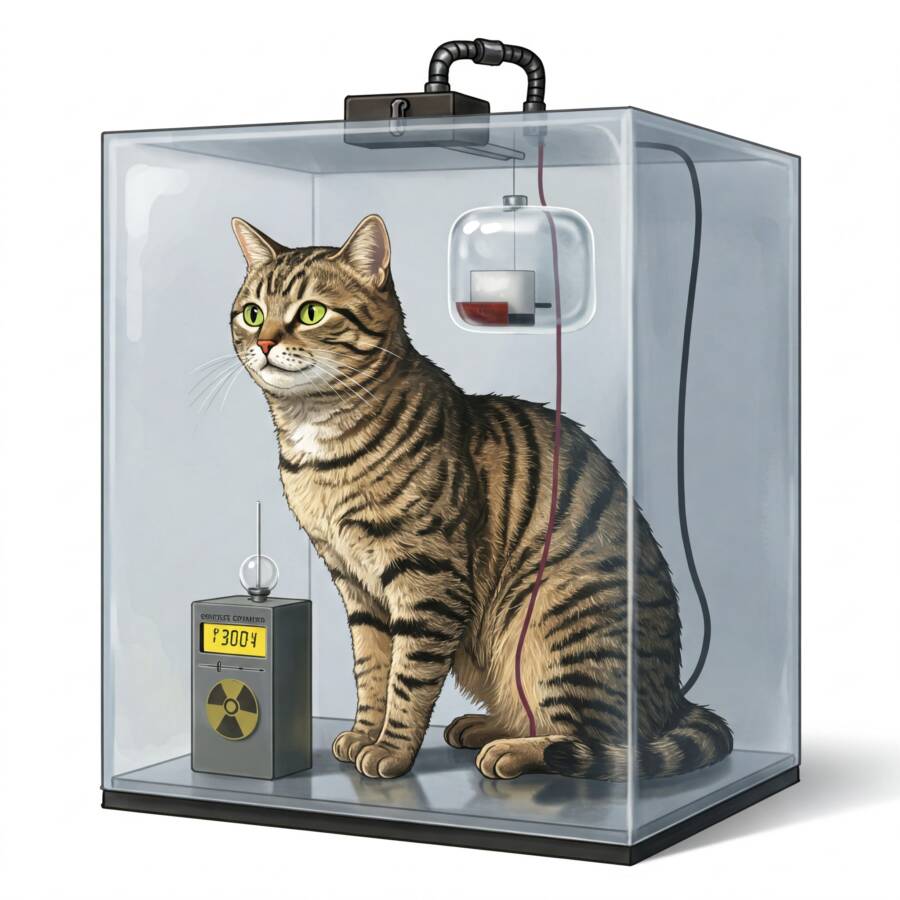Let’s talk about some things scientists can’t explain!
Science has done lots of things to demystify the world we live in. Phenomena that would have been ascribed to gods or the supernatural have, thanks to the scientists, been explained rationally (even if, often, some scientific notions remain poorly understood).
Many ancient mysteries have been solved through experimentation, and there have been numerous unusual and strange examples of these. Still, while science has managed to find some fascinating truths about both Earth and space, there are some surprisingly common things scientists can’t explain.
And no, these aren’t the “big think” mysteries like understanding the fundamental nature of time itself or reconciling quantum physics and relativity. These are, in fact, things you’d think scientists would have an answer for—like why sand is soft or how bicycles work.
Here’s a bunch of random things scientists can’t explain yet to this day!

1. Why we yawn, and why it’s contagious
Perhaps one of the most interesting things scientists can’t explain is the reason why we yawn. Yawning is one of those physical actions that seems almost impossible to escape.
It must have happened to you at least once. You’re in the presence of someone else who’s yawning, and the next second, you’re doing it too! Given how common yawning is and how it can quickly become contagious, it’s all the more intriguing to discover how little science actually knows about it.
According to the prevailing wisdom, this is how the body gets more oxygen-rich blood to the brain. Apparently, humans take fewer deep breaths when they’re tired. However, there’s not enough neurologic data to confirm this particular process, so it’s among the things scientists can’t explain to this day.
Plus, many other animals yawn as well. The contagiousness of this action may stem from social mirroring, which is when animals mimic the behavior of others, particularly those behaviors that may seem beneficial.
2. How anesthesia works
You wouldn’t tell that this one falls under the category of things scientists can’t explain. Anyone who has undergone any sort of surgery has had an encounter with anesthesia. But we still don’t know all about this invention that has allowed such interventions of the body to be far less painful compared to how they were in the past.
Yes, even though it’s a common medical practice that’s used across the world many thousands of times every time, scientists can’t exactly tell why it works.
For some time, it was thought that anesthesia affected the fatty parts of the brain, disrupting neural activity there. Now it’s believed that certain brain receptors bind to the anesthetic, which leads to consciousness.
Furthermore, experts increasingly speculate that there may be a multitude of processes at play rather than one simple mechanism that would explain all the others.

3. Why we laugh
Going forward with the list of random things scientists can’t explain, there’s something funny friends and comedy movies make us do: laugh.
While the reasons for laughter can vary greatly from culture to culture, there’s still no scientific theory on why we do that. Since it’s so common, you might think experts would have found some unifying explanation for why humor happens, but instead, the opposite is true.
New research suggests humor stems from the violation of a physical or social norm, yet not to such an extent that it would result in a fear struggle. Some evolutionary biologists have claimed that laughter might have contributed to social cohesion, and since this would increase the chances of group survival, it meant such a behavior would be passed on to the next generation.
4. Why we cry
If why we laugh is on the list of things scientists can’t explain, then it’s the reason why we cry. Shedding tears is something we all do, whether it’s sadness or happiness behind those tears.
The action also has a physiological benefit because it helps wash away debris from the eyes. Yet, its connection to emotion seems to be unique to humans, and science hasn’t yet decided on a consensus on why we have developed this particular behavior.
According to scientists, emotional crying has no specific linkage to a physical benefit. While there seem to be some chemical differences in emotional tears (compared to those shed while peeling an onion), we still don’t know exactly what physical good crying does.
Read on to discover other things scientists can’t explain!
5. Why cats purr
Cats are known for lots of things, but one of their most well-known traits is their purr. This sound is a cute rumble, which the prevailing wisdom says signifies the feline’s contentment.
However, these furry companions are also known to purr for several other reasons, and some even make that sound when they are frightened. Moreover, not all felines can do the purr thing, with some of the big cats, such as tigers and lions, unable to do so.
Though their motivations remain unknown, most scientists have come to believe cats purr as a soothing mechanism. Furthermore, there’s also evidence they may engage in this behavior in order to boost bone growth, as the frequency at which they do it encourages the regrowth of tissue.
Still, cat purr is one of the things scientists can’t explain to this day.
6. What makes sand soft
Dipping your bare feet into the sand at the beach feels nice. The soft texture of it seems to be innately relaxing. However, this adds to the list of things scientists can’t explain. The softness of sand is also perplexing, especially because there’s so much about this specific tactile quality that defies understanding.
For instance, most people notice how the sand on the beach feels softer than the layers underneath; the reason for this is the compaction of the latter. Still, a lot of research has been done on this very common material, and some rules do seem to hold true. For example, the smaller the grain, the more likely it is that the sand will feel soft, as it’s able to move more easily.
However, if they’re too small, moisture will make them stick, neutralizing the soft feeling and replacing it with clumpiness.
By the way, if you want to learn more about things scientists can’t explain, here’s an interesting book you may want to read.

7. Why we get hiccups (and how to cure them)
No. 7 on the list of things scientists can’t explain is why we get hiccups. Getting hiccups can be annoying, especially if you’re in the middle of something important (like a meeting), and they don’t go away quickly.
Most of us have had them at some point in our lives, and while hiccups often go away on their own, sometimes they can last for a surprisingly long time.
Despite how common they are, hiccups are among the things scientists can’t explain. Experts remain in the dark about what they do and what causes them as they have always been. Plus, science doesn’t even have an answer for how to cure them.
Of course, scientists have come up with several theories as to why we hiccup. Some think it might have to do with the need to get rid of excess gas, while others suggest it’s a remnant from an earlier stage of evolution.
As of yet, there have been few systematic studies on the causes and mechanics of hiccups, let alone how to get rid of them.
8. Why we can ice skate
For many people, going ice skating is a common activity during the winter months. But while this is something so many people do, it’s still one of the things scientists can’t explain. How exactly is it possible for us to do that?
Previously, it was thought that the pressure of the skate increased the temperature of the ice enough so it would start to melt just a little bit, and the resultant skin of water allowed the skater to glide across the ice. Unfortunately, this theory doesn’t hold up.
In fact, it would take a considerably larger amount of pressure to increase the melting temperature of ice, much more than any skater is likely to bring to bear.
While the mechanism that enables ice skating to take place is still unknown, there are some working hypotheses. One claims that the water molecules at the surface may not be as tightly secured as was thought, while others suggest there are flaws in the ice structure that allow it to enter the liquid state.
If you liked our article on things scientists can’t explain, you may also want to read 6 Astonishing Scientific Questions That Are the World’s Biggest Mysteries.














